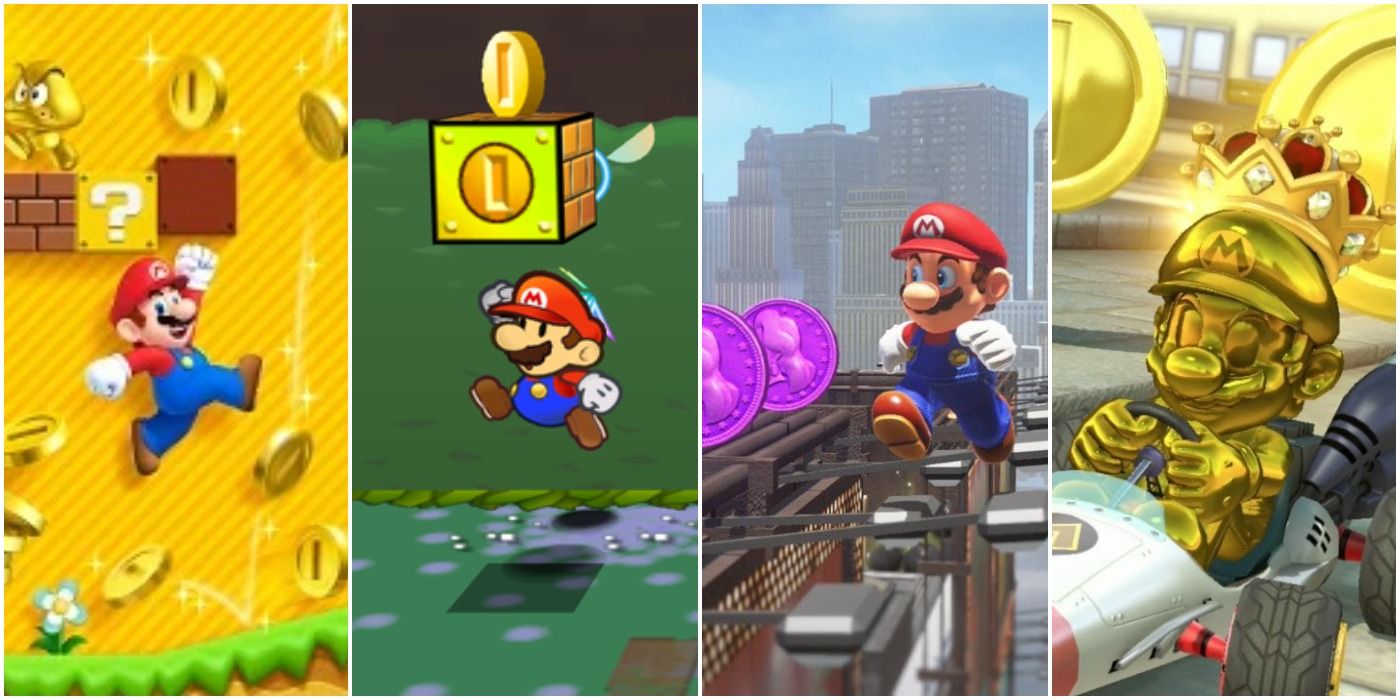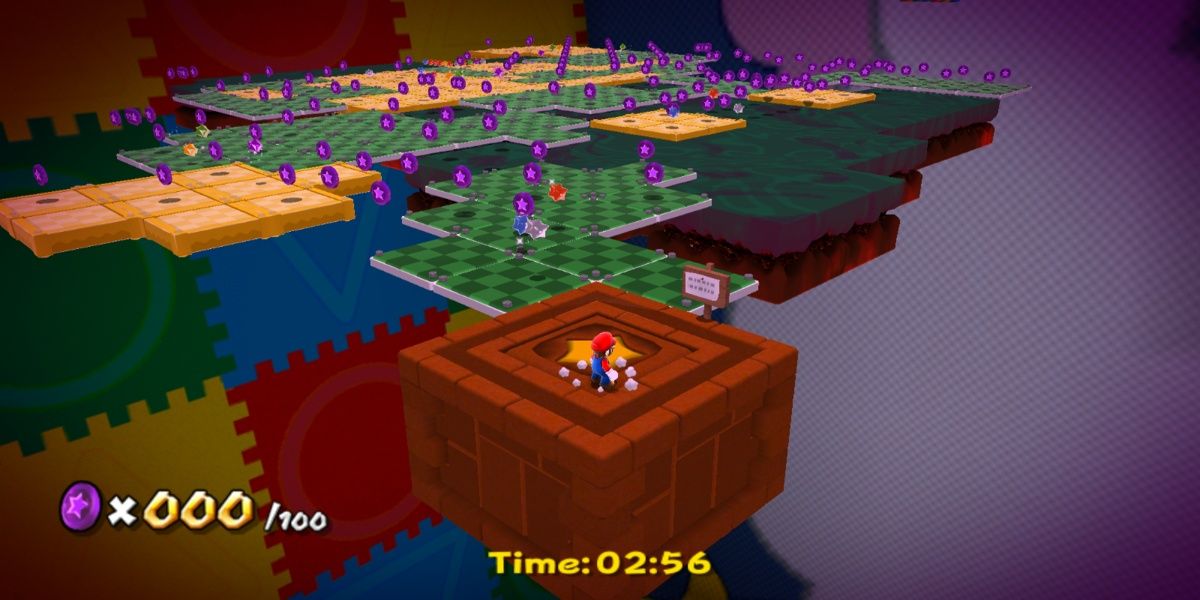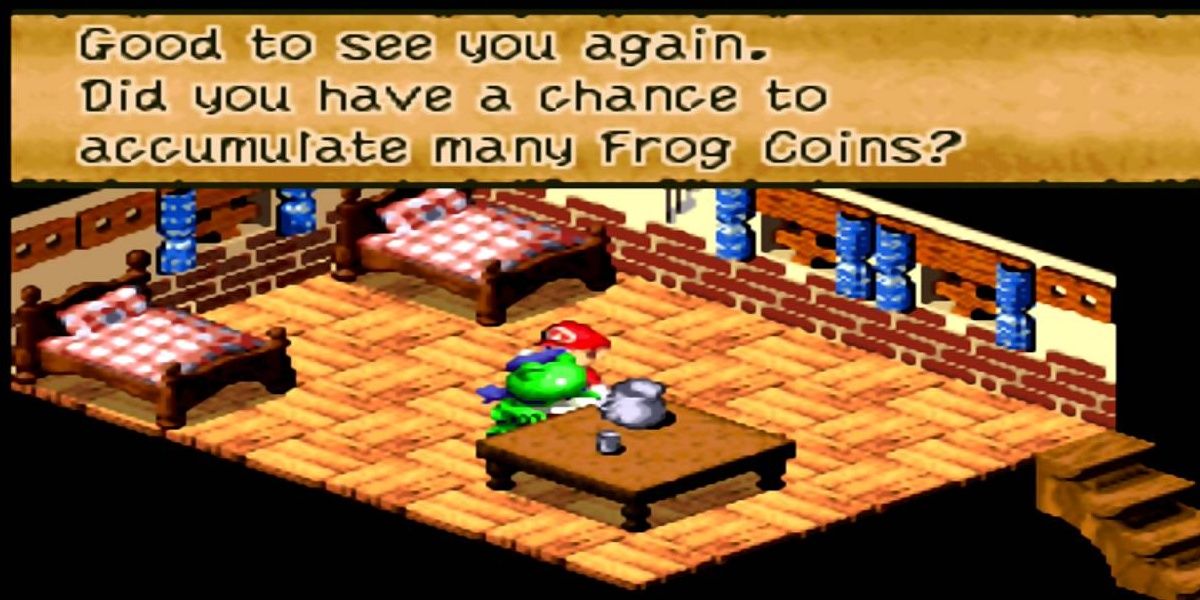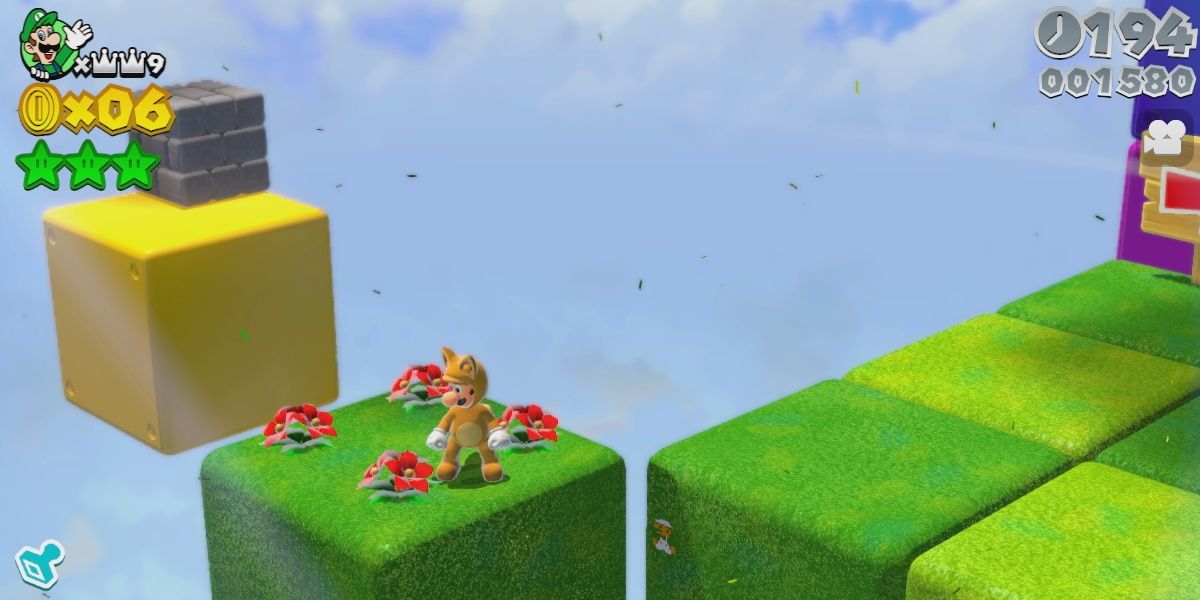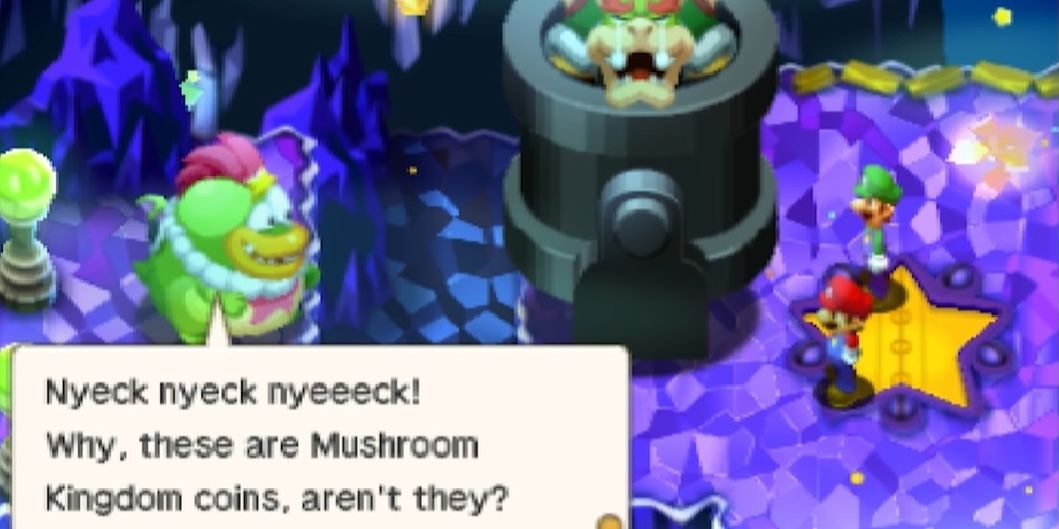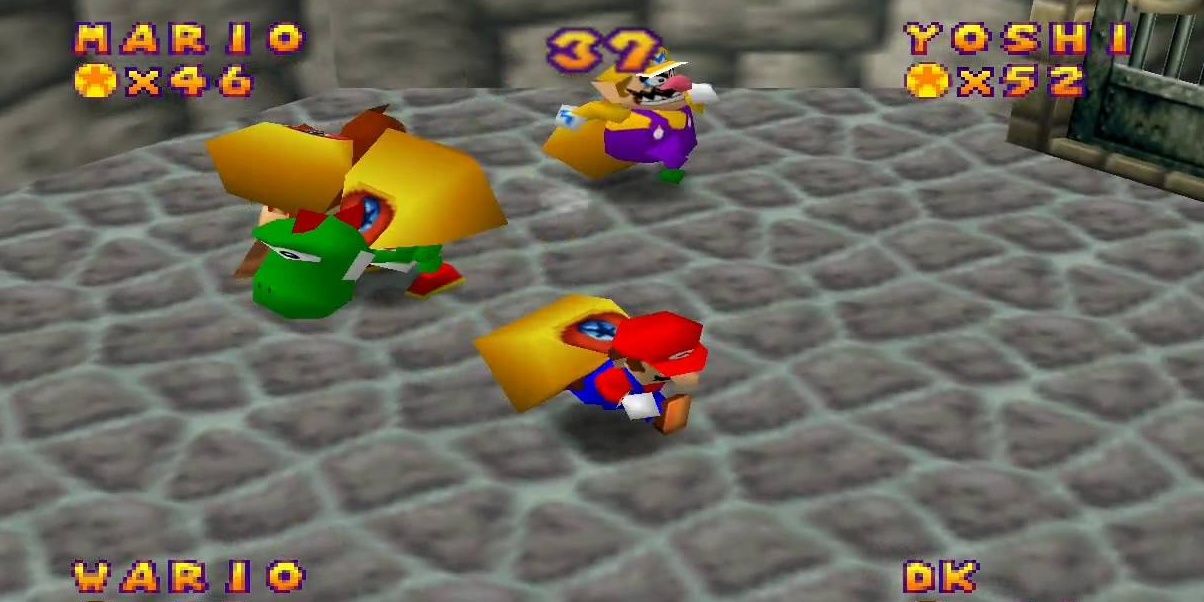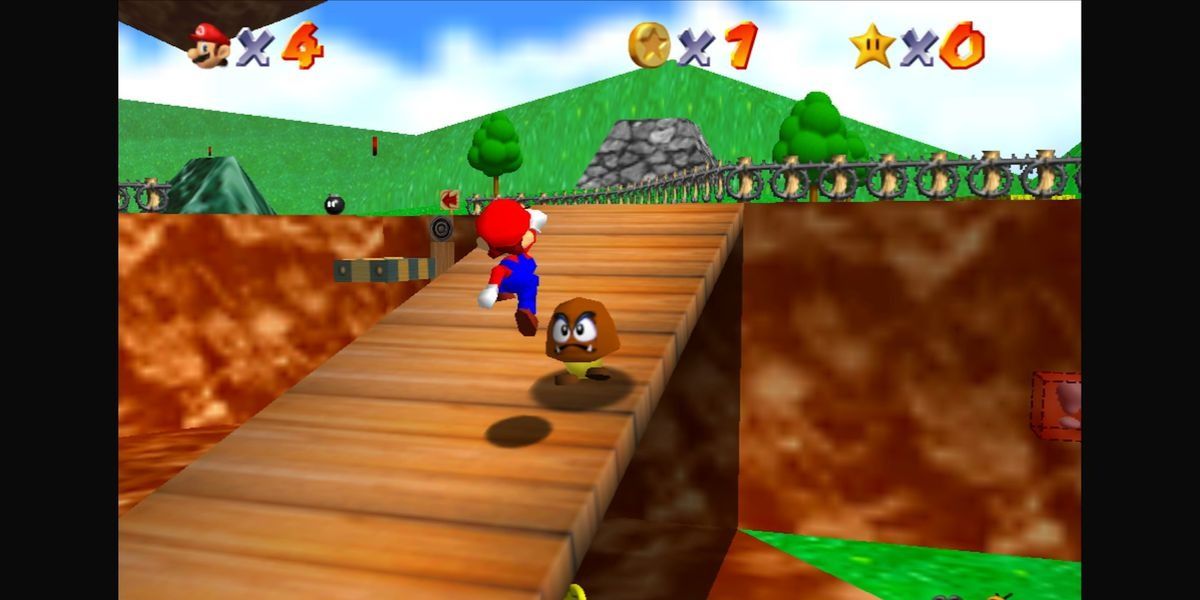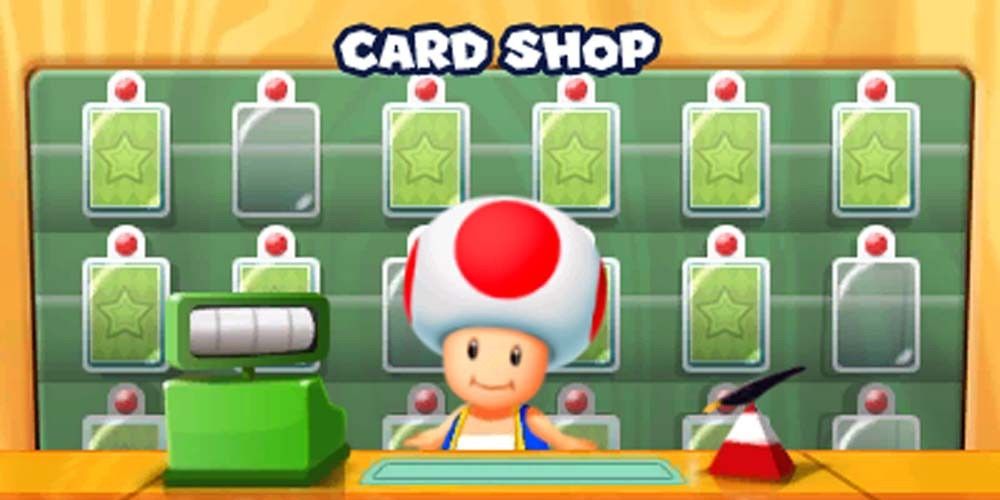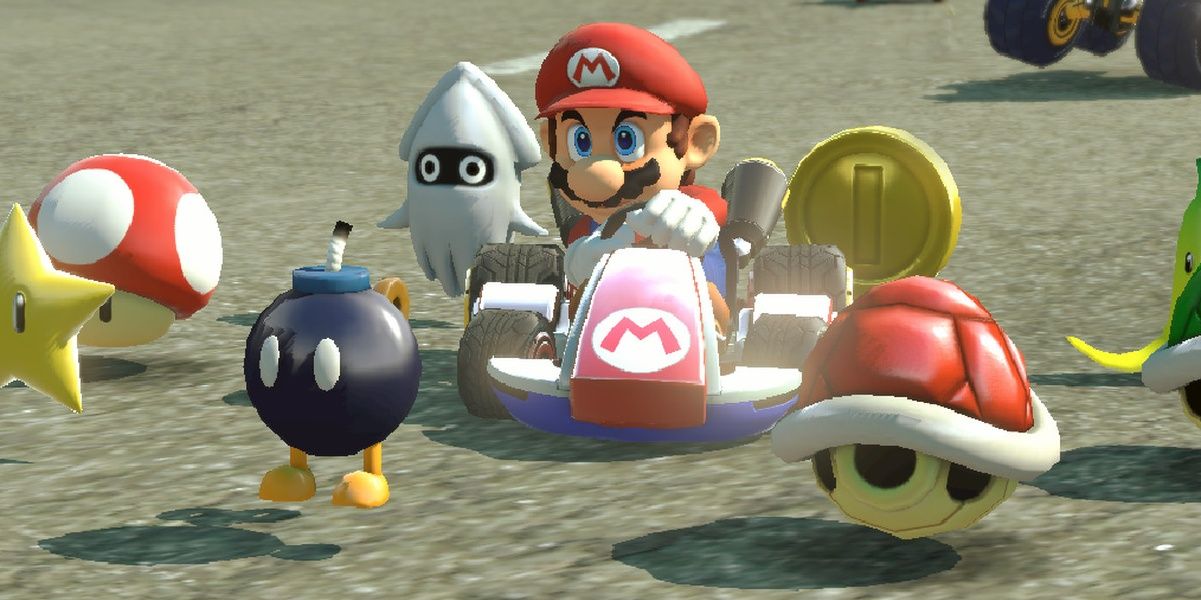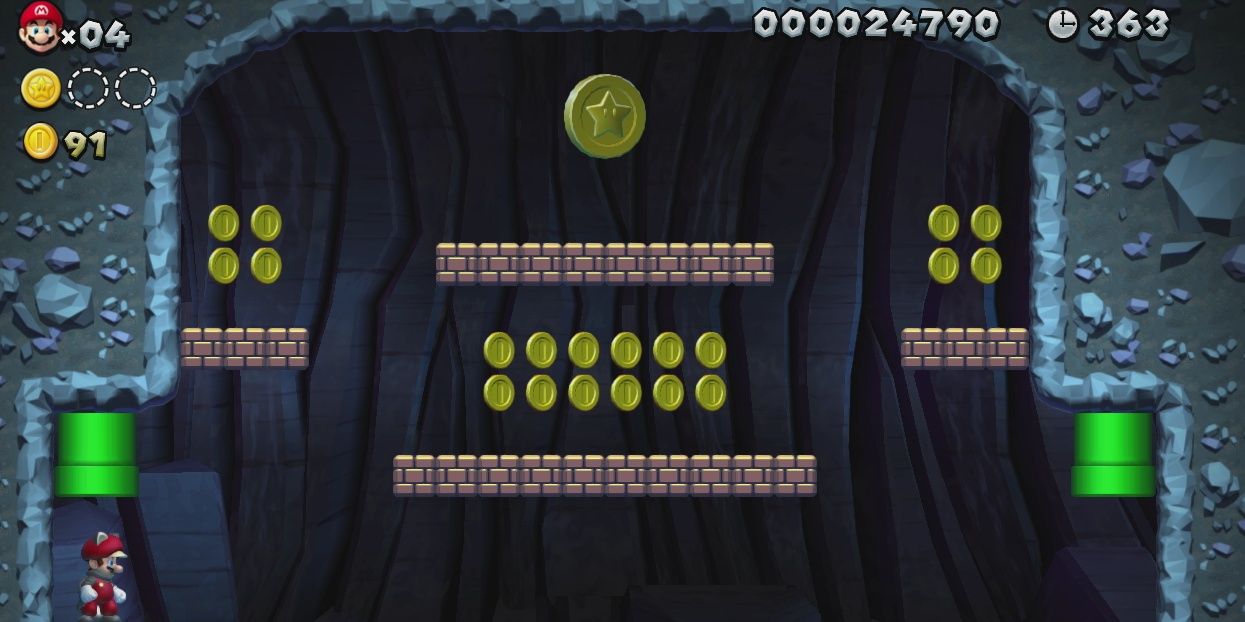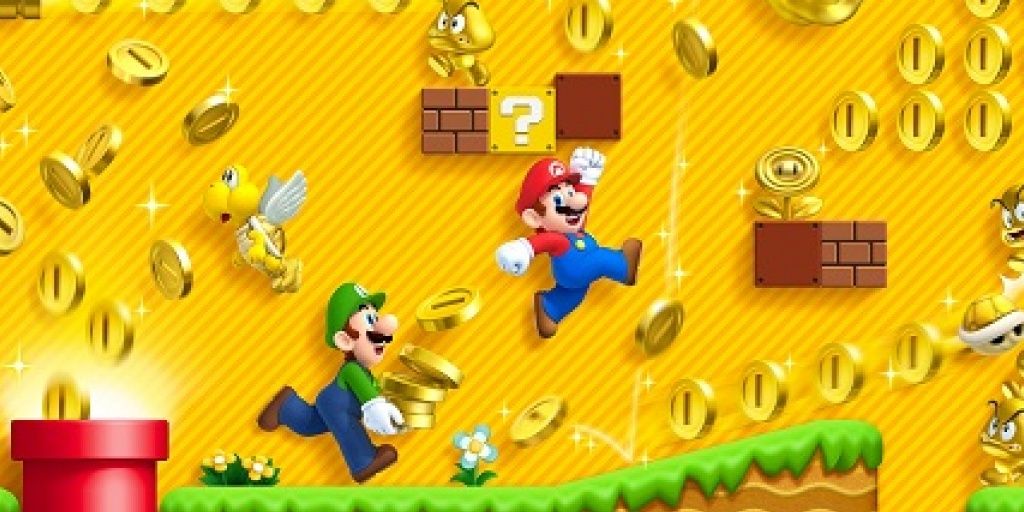Throughout Mario series history, coins have served as the Mushroom Kingdom's primary currency. Debuting in Mario Bros., coins have served every purpose from building score to gaining an extra life. In the RPG titles, they also act as currency to purchase gear from shops.
However, the Mario series' main source of currency holds its fair share of secrets. Besides the widely known purposes of coins in the familiar platformer titles, coins have come in various colors and were found in all manner of locations. These only tell but a few secrets of the coin economy of the Mushroom Kingdom and its borders beyond.
10 Coins of All Colors
The Coins of the Mushroom Kingdom, and realms beyond, come in many colors. Among these include Golden Coins, Red Coins, Blue Coins, Green Coins, and Purple Coins. Each one serves a different purpose.
Red Coins were used for world completion in Yoshi's Island, Super Mario 64, and Super Mario Sunshine while granting Mario bonuses for collecting them in New Super Mario Bros. Blue Coins appeared via P-Switch in Super Mario Bros. 3, would count towards 5 Coins in Super Mario 64, and aided completion in Sunshine. Green Coins came from green hoop rings and earned Mario a bonus for collecting them all. Purple Coins were collected for some of the most challenging stages in the Galaxy titles as well as currency in Odyssey.
9 Frog Coins
Super Mario RPG introduced a new form of currency: Frog Coins. These green-colored coins featured frog faces on them. Furthermore, they played a unique sound when collecting them. They should not be confused with the Green Coins from New Super Mario Bros. U and Super Mario 3D World.
Frog Coins were far rarer than your standard golden coins. As such, these often hidden coins were sought out by but a few vendors throughout the game. Frog Coins could be used to purchase various rare goods, such as KeroKeroCola and Scrooge Ring.
8 Hidden Throughout Mushroom Kingdom
Coins can be found literally anywhere. Super Mario Galaxy was among the first games to introduce hidden coins not placed in hidden blocks. With just a bit of exploration, reaching heights above the common ground would reward players with a few extra coins. This tradition continued in Super Mario 3D Land, 3D World, and Odyssey.
Invisible coins also appeared in the 2D games when activated via a P-Switch. Plus hitting the blue switch in Super Mario 64 activated Blue Coins which were worth 5 coins apiece. Perhaps the many citizens of the Mushroom Kingdom are well off in anywhere not named Rogueport.
7 Not Equivalent To Beanbean Currency
In Mario & Luigi: Superstar Saga, the Mario Bros. take flight and enter a border beyond the Mushroom Kingdom. Upon arriving in the Beanbean Kingdom, Bowser gets trapped in a cannon. They're offered "help" by a hostile creature named Tolstar who demands 100 coins. However, he's referring to Beanbean Coins as Mushroom Kingdom coins lack their worth.
As such, Mario & Luigi's journey includes collecting the new currency which otherwise functions the exact same as it does back home. Beanbean Coins are used to purchase items and various equips. Plus, their currency extends to the Mushroom Kingdom immigration colony, Little Fungitown.
6 Come In Bags
Nearly every Mario game features loose coins out in the open. However, Mario Party adds a new item: Coin Bags. These are worth 5 Coins apiece.
The Coin Bags are coveted prizes which are featured as bonuses as well as in mini-game prizes alike. However, they do not appear in other Mario titles with the exception of the Goodie Bag in Super Mario RPG. Perhaps it's worth noting that the star-branded bags bear a striking resemblance to the Bells featured in Nintendo's Animal Crossing series.
5 Held By Enemies
In the original NES Mario titles, Coins were found in blocks and out in the open. It's easy to remember that, in Super Mario 64, jumping on Goombas' heads resulted in a coin appearing from them. However, this tradition began in Super Mario World.
As Fire Mario, or with Yoshi spitting out fireballs, Mario could nab a coin from a defeated enemy. Furthermore, for every Berry or enemy Yoshi swallows, that counts as one coin. Why Yoshi's ability to digest enemies converts into currency remains a mystery to this day.
4 Negotiable Prices With Stache Points
In all the Mario & Luigi titles, Stache points could be upgraded to collect discounts off shopkeepers. Well-groomed mustaches resulted in slashed prices when players needed rare or expensive accessories. Yet again, this showcases how well-off the Mushroom Kingdom economy is.
3 Used To Power Karts
Mario Kart players note that coins can be used to boost speed. Collect 10 coins and the Kart can reach its maximum speed. This tradition began in Super Mario Kart for SNES.
Mario Kart 64, Double Dash, DS, and Wii – half of the series – did not use this system. While Coin Runners appeared as a Battle Mode game, Mario Kart 7 would bring back the coin system in order to boost speed in races. Unlike in Super Mario Kart, however, the more recent titles did not cost players coins just by bumping into one another. Also, Rupees and Bells, which appear in two tracks in Mario Kart 8 Deluxe, serve a similar purpose.
2 Unlocks Special Worlds
Big Coins have historically served a purpose for completion. Even Super Mario World: Super Mario Advance 2 revamped the Dragon Coins to give completionists a new purpose to the game. Plus, collecting all of the Big Coins in New Super Mario Bros. would count towards completion.
Beginning in New Super Mario Bros. Wii, special coins could be used to unlock World 9. Comparatively, the Comet Medals in Super Mario Galaxy 2 were used to unlock Prankster Comets which, in turn, would lead to unlocking the Grandmaster Galaxy. The Star Medals of Super Mario 3D Land also serve to unlock new worlds.
1 New Super Mario Bros. 2
Coins became the focal point of Mario's 2D entry on the 3DS. In New Super Mario Bros. 2, coins littered the stages like never before. It also introduced a new transformation: Gold Mario.
As Gold Mario, players could launch golden fireballs. These would, in turn, create more coins when destroying enemies. As a bonus, players could also unlock a new title screen upon collecting 9,999,999 coins. Furthermore, Golden Plains became a stage in Super Smash Bros. and even featured a Golden form power-up for players who collected 100 coins!

